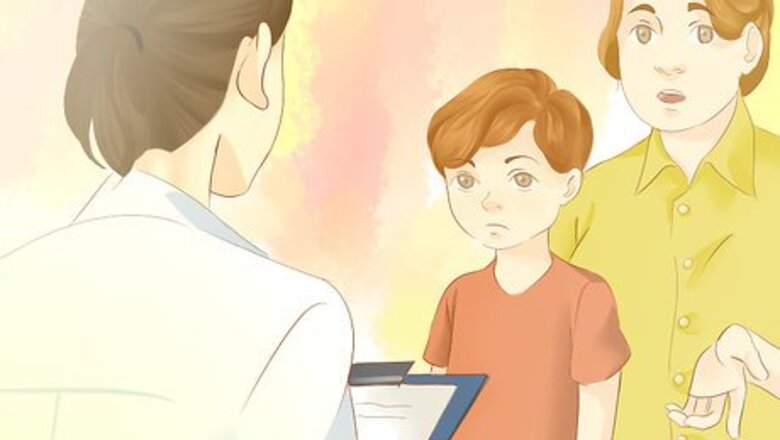
views
X
Trustworthy Source
Child Mind Institute
Nonprofit organization providing evidence-based care for children with mental health and learning disorders and their families
Go to source
Panic attacks can happen to people of any age, and while they are not dangerous in and of themselves, they can interfere with an individual's ability to interact with others and lead a fulfilling life. If your child suffers from panic attacks, it is important to respond in the correct way to help reduce anxiety. If the panic attacks are frequent, your child should be treated by a mental health professional for panic disorder.
Getting Professional Treatment for Panic Attacks
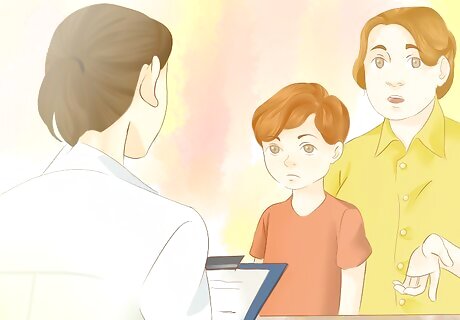
Get a diagnosis. In order to diagnose panic attacks, a medical professional must first rule out any physical causes of the symptoms, as well as other mental disorders. Take the child to a doctor for a complete physical, and then to a mental health professional for an evaluation. Just because a child has a single panic attack does not necessarily mean that he or she has a panic disorder. If the panic attacks are infrequent your child may not need any treatment, but if they are getting worse, you should definitely pursue treatment.

Try cognitive behavioral therapy. Therapy can be very beneficial to children who suffer from panic attacks. Cognitive behavioral therapy uses a variety of techniques to help children identify the sources of their anxiety and reduce the frequency of panic attacks. Treatment may involve exposure therapy, which means helping the child to face specific places or situations that tend to trigger panic attacks. Treatment also typically involves teaching children strategies for identifying automatic thoughts that cause anxiety and replacing them with more realistic thoughts. Panic attacks in children are often related to some kind of traumatic experience. Look for a therapist who has experience working with trauma survivors and who can offer trauma-focused therapy.
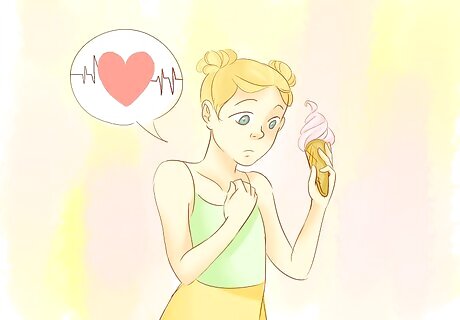
Try relaxation training. In addition to cognitive behavioral therapy, your child may benefit from a variety of relaxation training methods. These techniques will teach your child to recognize and respond to anxiety in a healthy way. Your child's regular therapist may be able to teach your child these techniques, or you may be referred to a specialist. Some techniques utilize muscle relaxation or visualization to combat anxiety. Learning to better control breathing patterns may also help your child prevent future panic attacks. Biofeedback is a technique that teaches children to recognize physical changes in their bodies, such as temperature or heart rate changes, and to consciously modify these changes to reduce anxiety.
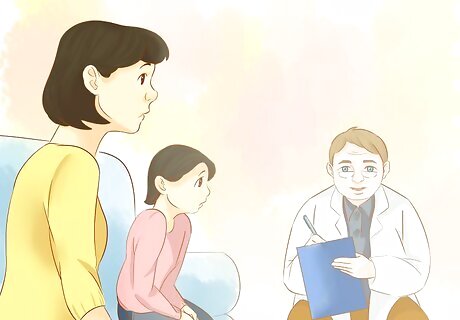
Get involved in treatment. Parental involvement in treatment is very important. Getting involved will show your child that you are supportive, and it will give you the opportunity to better understand your child's treatment and progress. Your child's doctor may recommend that you attend some or all of the therapy sessions with your child. If so, be sure to attend.
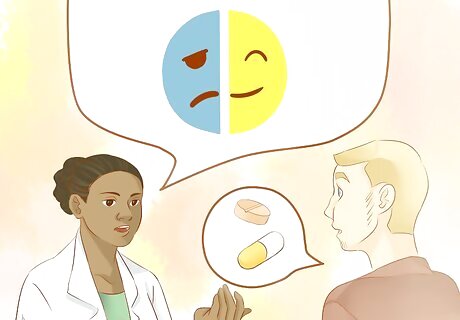
Consider medications. In some cases, your child's doctor may recommend medications, such as sedatives or antidepressants, to treat your child's anxiety. Talk to your child's doctor about the risks and benefits of treating your child's panic attacks with medication. While these can be very effective at treating symptoms, they may also cause side effects and lead to dependency.
Dealing With the Symptoms of Panic Attacks
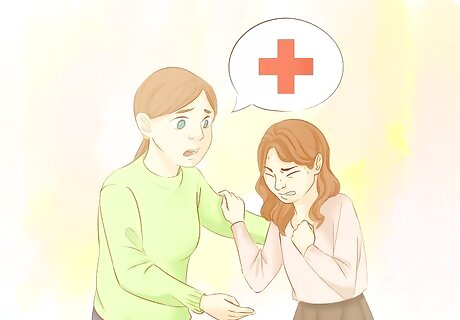
Get medical treatment for the first panic attack. If your child has never experienced a panic attack before, it's a good idea to get medical treatment at the first sign of one. This is important because the symptoms of a panic attack may be easily confused with the symptoms of more serious medical conditions, such as a heart attack or an asthma attack. If your child has had panic attacks before, medical treatment may not be necessary each time the same symptoms recur, but be on the lookout for new symptoms that may indicate a different condition. For example, if your child usually experiences trembling, sweating, and intense anxiety during a panic attack, then these symptoms may be considered normal for her. However, if your child has an additional symptom, such as shortness of breath or difficulty breathing, then you should seek immediate medical attention.
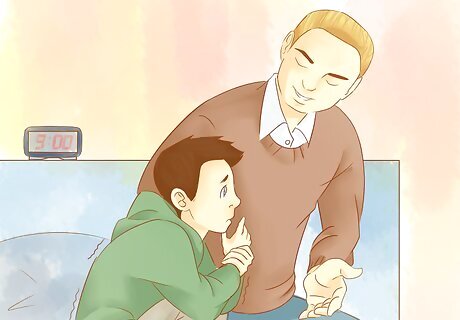
Stay calm. It is important for everyone who is around the child to stay as calm as possible during a panic attack. If others get worried and anxious, the child's anxiety may become even worse. If you are with the child during the panic attack, try moving to as calm and quiet an area as possible and talking to the child is short, calm sentences. Reassuring the child that he or she is safe can be very helpful.
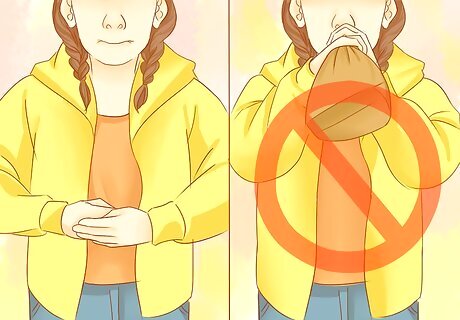
Encourage slow breathing. As long as you are sure that the symptoms your child is exhibiting are due to a panic attack, you can try to relieve the symptoms at home. One way of doing this is by having the child concentrate on breathing more slowly than normal, which will help reverse the hyperventilation that often occurs during a panic attack. You can instruct your child to purse his or her lips to aid in breathing more slowly. Placing the hands on the stomach can help your child feel the rapidity of their own breathing. Do not have your child breathe into a paper bag, as this can restrict oxygen flow too much, which can make symptoms worse.
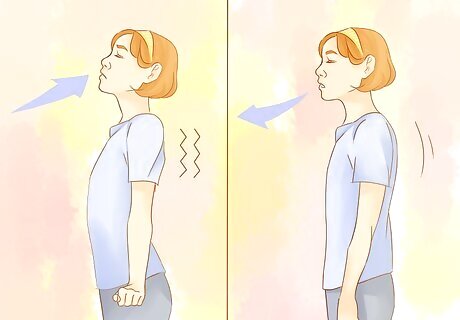
Use muscle relaxation techniques. Another way to help your child during a panic attack is to guide him or her through a muscle relaxation technique. This involves tightening and then relaxing each of the major muscles, one by one. Before your child starts this exercise, instruct him or her to relax the shoulders and notice any muscle tension that may be present. Instruct your child to inhale deeply while tightening each muscle, and to exhale deeply while relaxing each muscle.
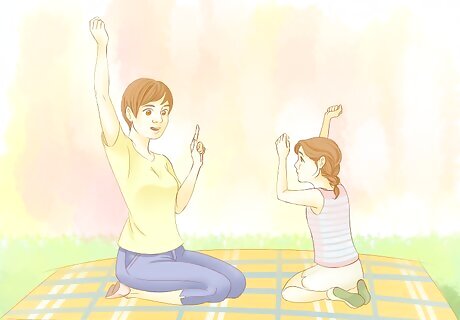
Try a guided activity. Another technique that may help a child during a panic attack is to guide him or her through a very simple activity. This may give the child something else to focus on during the panic attack, which can cause the panic to subside. For example, try instructing the child to raise both hands into the air, and then to lower one at a time. You can also try doing a grounding exercise with your child. Instruct them to identify 5 things they can see, 4 things they can feel, 3 things they can hear, 2 things they can smell, and 1 thing they like about themself.
Making Lifestyle Changes to Reduce Panic Attacks
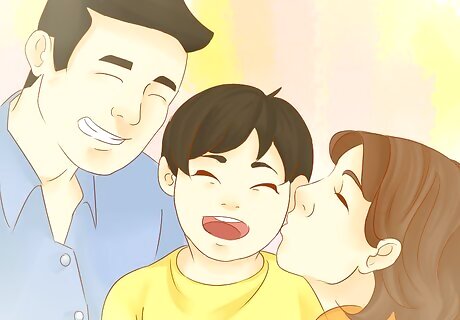
Help foster feelings of safety. Children who grow up in dangerous environments or around people who tend to worry a lot are more likely to develop anxiety disorders. You may be able to help reduce your child's anxiety by helping them feel safer. Keep your child away from friends or relatives who have violent tendencies. If you suffer from anxiety, try not to let your child see the symptoms. Even if you do not suffer from anxiety, stay as calm as possible around your child. Avoid yelling and shouting as much as possible.
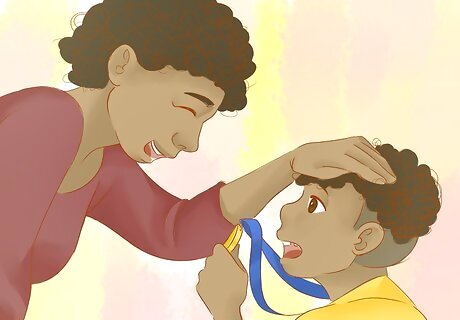
Offer judgement-free support. You can help a child deal with an anxiety disorder by being very supportive and by not passing judgement. Always be there to listen to your child and help him or her work through anxiety. Children may avoid talking about their anxiety because they worry that they will be judged. Providing a judgement-free environment for your child can help encourage open, honest communication. Try to avoid punishing your child for anything that may be related to the panic attacks, including poor grades. Instead, offer constant encouragement and praise your child for all accomplishments, both big and small.
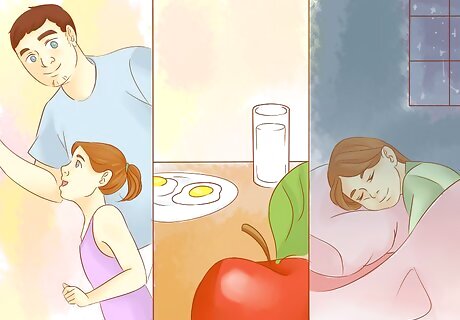
Encourage healthy habits. While you may not be able to prevent all future panic attacks, you can help your child reduce the severity and frequency of symptoms. Encourage your child to adopt healthy habits that can prevent panic attacks. You may want to adopt the habits as well, as this may help your child stay committed to them. A regular aerobic exercise regimen can help reduce overall anxiety and the frequency of panic attacks. Try encouraging your child to join a team sport, take up jogging, or start cycling. Relaxation techniques, such as meditation, deep breathing exercises, and yoga, are also very helpful for reducing symptoms, so try to help your child incorporate one or more of these activities into his or her schedule. Try limiting your child's caffeine intake, as this can make symptoms worse. A balanced diet and sufficient sleep are also important for combating anxiety.



















Comments
0 comment